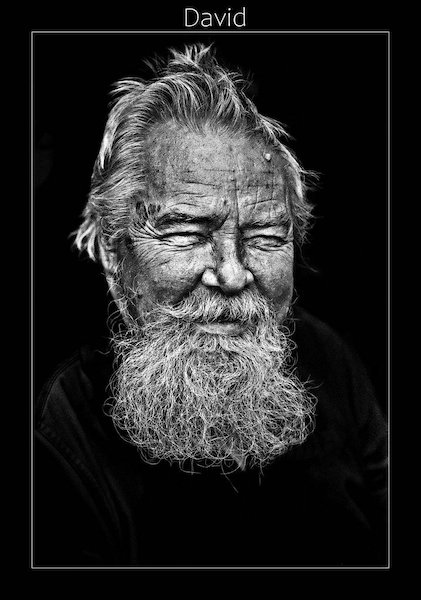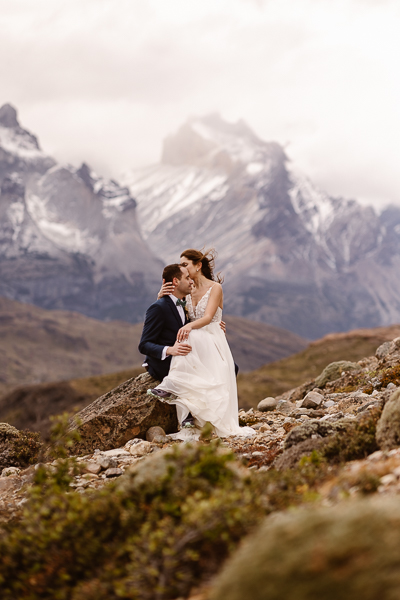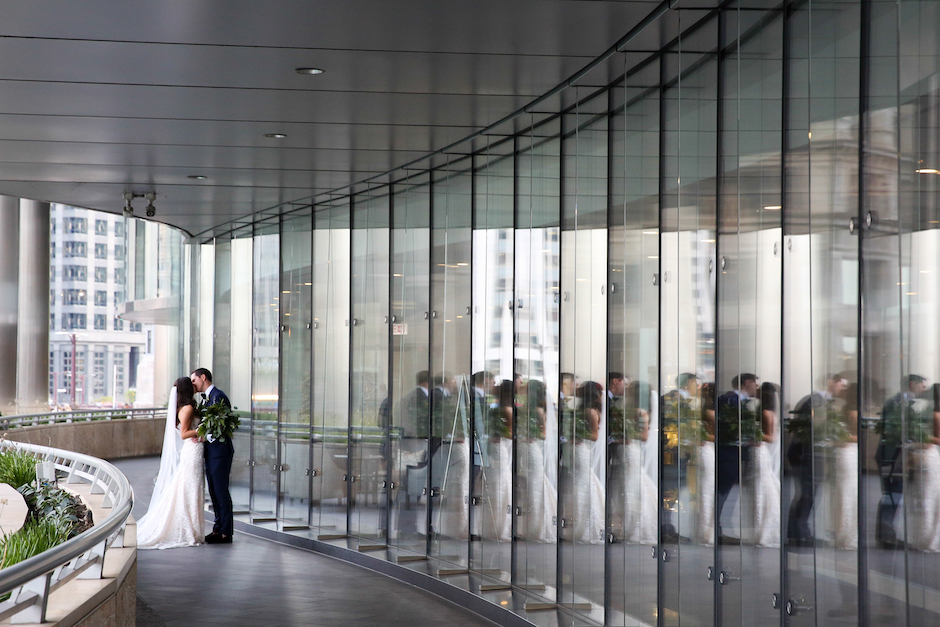Profiles
Photographer You Should Know: Frieke Janssens, Portrait Provocateur
April 12, 2018
Why You Should Know Her
In late 2017, Belgian photographer Frieke Janssens came out with her first book, The Sweetest Taboo, a collection of personal series as aesthetically alluring as they are conceptually thought-provoking.
frieke.com | Instagram: @friekejanssens_photography
Not every photographer has the gumption to work on a challenging, controversial and (somehow also) impeccably polished series every day, but lucky for us, Frieke Janssens does.
The conceptual photographer estimates that about 80 percent of her time is spent preparing for shoots, which is a hefty chunk of time to devote to one series a year, but if that’s what it takes to conceive and photograph highly staged shoots that also evoke a powerful, provocative message, then, she says, so be it.
“I want to take a picture that people want to hang in their living rooms, but I don’t just want to make a beautiful image,” Janssens says. “I want to tell a strong story.”
Take “Your Last Shot,” Janssens’ series comprising portraits of and for people so that others may remember them once they’ve passed away. Some might be spooked by it, but Janssens managed to tease out a topic that still remains taboo in her native Belgium, she says, with a sort of pragmatic finesse.
“It’s always beautiful if I’m in an expo and people start talking to each other about my photos,” Janssens says. “In general, I think it’s important for photography and art to bring more difficult subjects to the people that they start to think and talk about.” She points to Ai Weiwei’s “Good Fences Make Good Neighbors” as an enviable example, a multi-site exhibition around New York City that comments on the global migration crisis: “It’s about a very difficult subject, but you can look at it and think it’s beautiful,” she says.
For the last decade and a half, Janssens has aimed to take people on this emotional roller coaster with her projects, which have come together in a book called The Sweetest Taboo.

One of the first shots from a new series, “Dust,” plays with society’s discomfort with the tiny particles.
A Foot in the Door
As a 15-year-old art student in Belgium, Janssens was studying drawing and painting when she took her first photography class. “I was so crazy about it that I signed up for an evening class too,” she says, eventually loading up her schedule to take classes six times a week. Near the end of her studies, she created a senior thesis photo project that culminated into a joint exposition. Editors and creative directors attended the show and afterward asked to see her book. Before she knew it, Janssens had a client list.
If that sounds suspiciously quick, that’s because it kind of was. In the aftermath of the September 11 attacks in New York City, Janssens says that by 2002, Belgian clients were cutting budgets and looking to hire photographers who were willing to work for less in exchange for portfolio material that would otherwise take longer to build.
One of Janssens’ first shoots was a campaign for a local classical radio station, a series of portraits of people with animals and funky wallpaper. It wasn’t anything like the average commercial shoot in Belgium, of beautiful people smiling in front of a blue sky, Janssens says. People were struck by her elegant lighting, which she truly mastered much later, she says, in 2015. That’s perhaps a price to pay for being completely self-taught, but today, Janssens is rewarded with a signature she’s known for: elevating delicate daylight with pops of artificiality that lend her subjects uncanny grandeur.

“Smoking Kids” calls into question the normalcy of smoking—props were used on set for the kids to hold, Janssens says, before she replaced them in post-production.
The Evolution of a Project
Janssens likes to take her time with her personal work because she needs to be absolutely convinced that it’s worth the effort, or as she says, “I wait until I have enough hints to start with the series.” It took three years of rumination for “Smoking Kids,” for which she is perhaps most known, to be firmly clinched as a project.
“When I was on a shoot and photographed an actor who was smoking, I thought about how beautiful it looked on camera, with the smoke bringing these soft layers,” she recalls. “Later, I worked with someone and noticed he had a jazz LP with a smoking musician. Then I saw a video about an Indonesian toddler who smoked 40 cigarettes a day, and I thought, Now it makes sense to start a series.”
Sharpening her concept with this edge—kids smoking—Janssens set forth on a project that some found disturbing, others amusing, but either way, she felt it was the final ingredient to something worth creating.
“Adult smokers are the societal norm, so I wanted to isolate the viewer’s focus upon the issue of smoking itself,” she writes in her artist statement for “Smoking Kids.” There weren’t any real cigarettes on set; the kids held chalk and sticks of cheese while Janssens lit candles and incense to create the wisps of smoke that would be added in post. She met any negative feedback with this key piece of behind-the-scenes information, which quelled concerns.
“Every day, you see thousands of images passing by,” Janssens says, “but ‘Smoking Kids’ is all about context.”

In her series “Dianas,” Janssens questions the feeling of being a single woman and the search for a lover as a kind of hunt.
Sticking to Her Guns
In between planning for and shooting personal work, Janssens also shoots a couple of big commercial campaigns a month to sustain her life as an artist, but they’re still very much in her style and aesthetic. Take, for instance, a “glamping” family for Volkswagen, stripped-down studio portraits for the Red Cross’ stem cell donor campaign, and ad agency Mortierbrigade’s “Sensitive to Light” shoot that paired albino models with albino animals—all of these shoots are christened with Janssens’ touch of peculiar nobility.
“If a client doesn’t like my style, they don’t have to book me,” she states matter-of-factly. “I’ve had a few jobs where at the end of the shoot, I realized another photographer would have been better. It’s really funny, sometimes you’ll have clients who say, ‘We like your style and we really want it, but…’ and then they’ll have a list of five or ten things that aren’t your style.” Janssens has learned to be up front with her vision and to send examples of her work in advance so that everyone’s on the same page. “I want to let them know what’s in my mind.”
After “Smoking Kids,” she got an uncharacteristic amount of requests to photograph children. Janssens entertained the inquiries a few times but then had to put her foot down. She doesn’t want to be known as a kids photographer, but she also says she understood why people associated her with children after the splash that “Smoking Kids” made (which is still curious, seeing as it was addressing a taboo). “It’s normal because there are so many photographers so people try to put a stamp on you, but I try to always be aware of that.”
Clients would ideally ask for her lighting and concepts, not for the subjects—they are more like actors playing a role on set, just as Janssens sees her role as more of a director.
The Sweetest Taboo
“I think I’m one of the few photographers who didn’t want to make a book,” the photographer says frankly. “I thought pictures have to live, to hang, to be sent,” but once the publisher Lannoo approached Janssens with the idea, she changed her mind. It had been 14 years since she started shooting, and it was time to give homage to her work thus far.
Janssens wanted to include all of her favorite personal work in the book, and in “thinking what the overall subject was,” she recalls, “we came to taboo.”
The Sweetest Taboo includes “Smoking Kids” as well as “Animalcoholics” (seen on the opening spread). Originally created for an art festival, it culminated into a panorama of “intoxicated” animals that was meant to be a reflection on the colloquialism of drinking culture. Janssens also wanted “Dianas” to be in there, her series comparing the Roman goddess of hunting and virginity with the search that today’s single women embark upon for love.
The publishing process was a lot of work, Janssens admits, but she would do another book down the road. When she was promoting her work at a photo festival in Poland in November, she says, it was nice being able to hand people something all-encompassing and tangible. The breadth of her photography isn’t exactly suited for a 10-second pitch.
That said, Janssens affords her work a fair amount of exposure beyond social media, selling prints from her book in addition to participating in solo and group exhibitions. This month, she has an exhibition in London. Her main venue is the Ingrid Deuss Gallery in Antwerp, and having exhibited in Brooklyn and at the Catherine Edelman Gallery in Chicago, Janssens would like to create a second base gallery in the U.S. “Next to Belgians,” she notes, “Americans are one of my biggest clients for personal work.”
Janssens is also trying something different this year: She’s going to try to complete two personal series, just to see how it goes. One will be about dust settling on unexpected scenery, “because it’s something that nobody likes,” and the other will be about film sets, just because she loves them, she says. Given her repertoire, though, Janssens is bound to sprinkle in a daring secret ingredient or two.
Frieke Janssens’ Lighting Advice
Note how daylight changes throughout the day. While Janssens always shoots with artificial light, she uses as much natural light as possible. On a long shoot, it’ll change in ways that can’t easily be recreated with flashes and strobes.
Start with bounce cards and silk screens. If you want to meld the ambient with the artificial, Janssens says, these tools will help accent your lighting.
Don’t fire up your flashes all at once. “It’s important to start with one flash and go from there,” advises Janssens, who adds more only when she deems necessary. “After a few hours shooting, I re-evaluate to see whether I need all my flashes on or not.”
Cameras: Nikon D850, Phase One 645DF with IQ180 digital back, Mamiya RZ67 with P45 digital back (for “Smoking Kids”)
Lenses: Phase One 50mm, 80mm and 110mm, Nikon 45mm and tilt-shift
Lighting: Elinchrom RX 800 and 1200 flashes with 2400 generator (bounced or via a softbox) mixed with natural light, continuous light (for “Dust”)
Related: How Fashion Photographer Emily Soto Stays Avant-Vogue with Film
The Ever-Clever Olivia Lochler’s Dance With Virality
Life on the Road With Katch Silva and Ben Sasso





